January 8, 2024
Key Unlimited PTO Statistics for 2024
In this article, we’re going to share some of the most valuable, interesting and eye-opening unlimited PTO ...
At Flamingo, we specialize in helping remote teams and remote workers be more productive. That’s why we’re interested in how remote workers work – such as what kind of challenges they face, the biggest benefits they see in remote work, and their overall sentiments about remote work.
To get these answers, we put a survey out to a collection of remote workers, asking about their experience. You can find the following data below.
We surveyed over 200 remote workers from our audience, from the following countries:
The majority of these people had been working remotely for between 1-2 years. Altogether, 94% had been working remotely for 2 years or less.
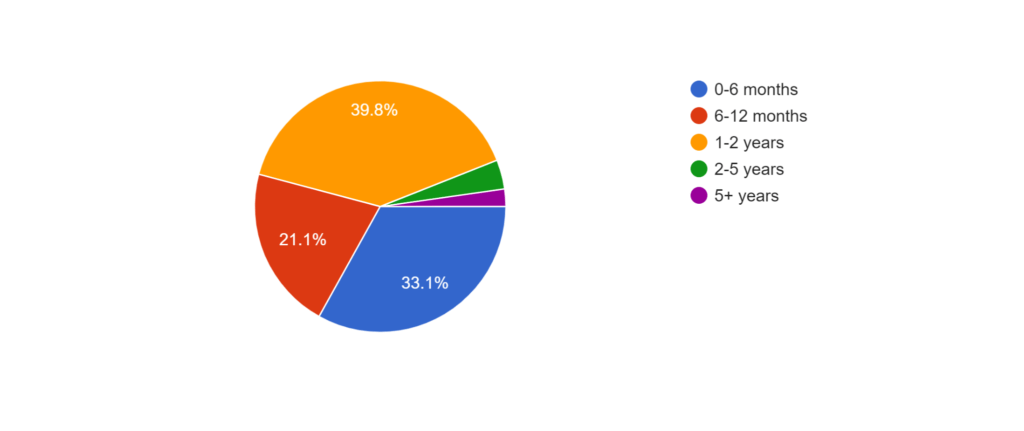
We wanted to know what kind of businesses most remote workers are in.
Nearly half were fully remote with a single company. The next highest figure was hybrid with one company, making up approximately a third of respondents.
A smaller share said they were working remotely for multiple companies, or working as a freelancer or gig worker.
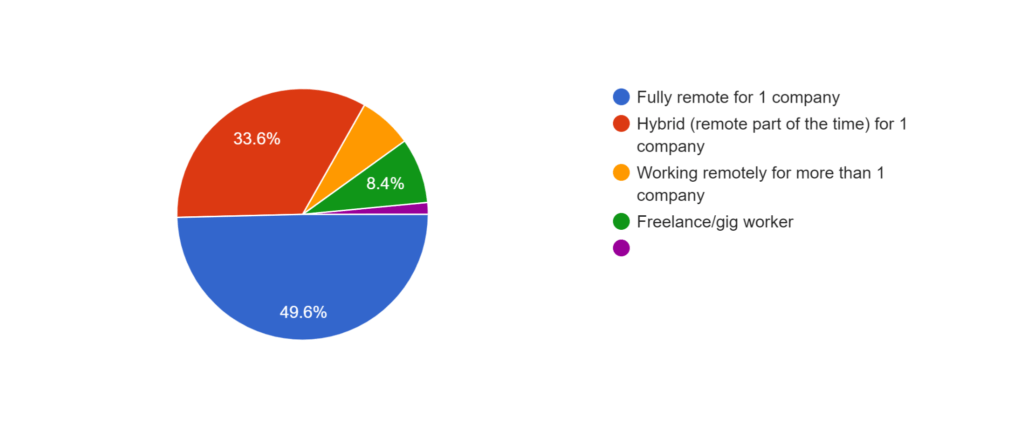
For 74.8% of the respondents, everyone in their company works in the same country, despite being remote.
That left just over a quarter of respondents whose companies were worldwide, with team members in multiple locations across the globe.
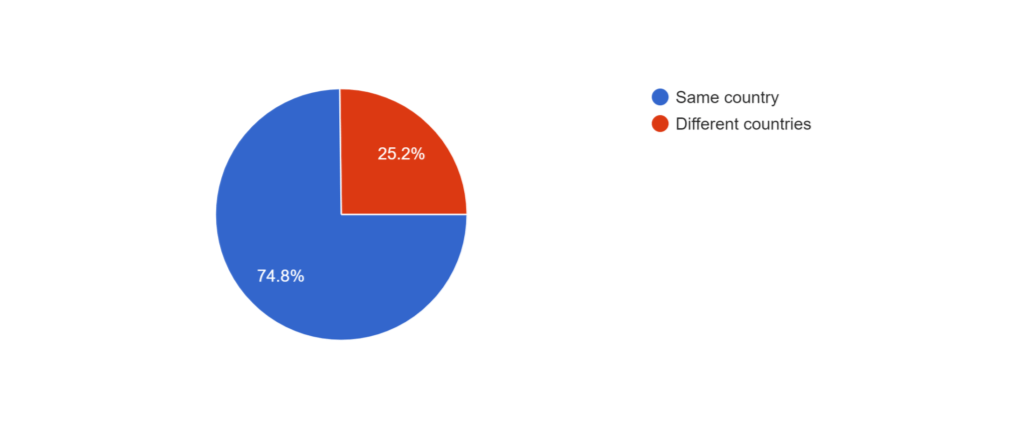
The majority of remote workers were based in just one city.
13% took the opportunity to move and work from different cities (within the same country), while 6% of those we surveyed move around and work from different countries (e.g.digital nomads).
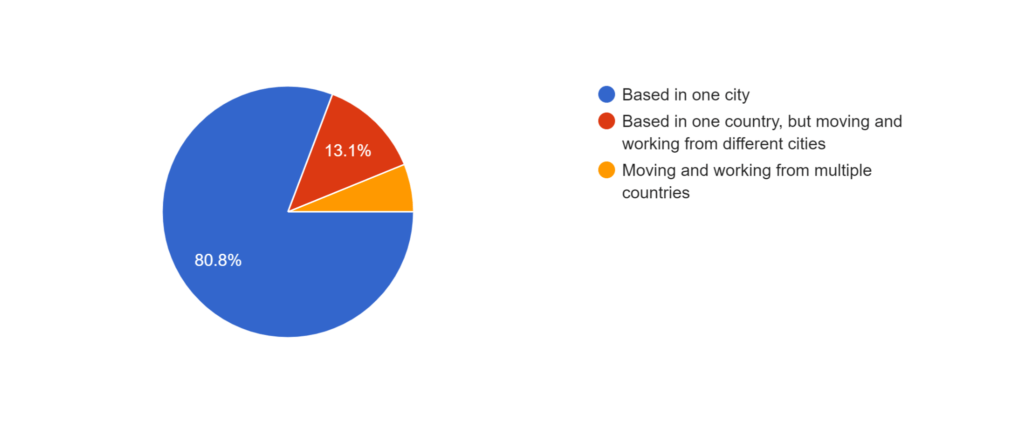
What are the biggest challenges for remote workers?
The most common issue was distractions – the biggest challenge for 21.5% of people.
Communication barriers, work/life balance, loneliness and motivation were also significant.

We also asked about what they saw as the biggest benefit of working remotely.
The vast majority said flexibility. Not having to commute scored second, followed by the ability to spend time with family, and the freedom to travel.
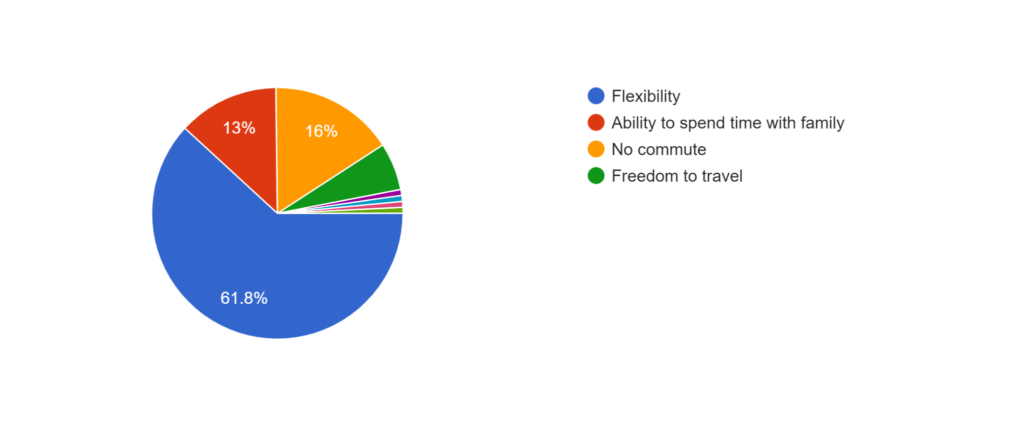
Most remote workplaces heavily use asynchronous communication (e.g. Slack, email, Trello, where you don’t need to respond in real time).
We asked how often these people used synchronous communication in their workplace – calls, video calls, meetings, etc.
Almost half had real-time communication every day, with another 40% having it multiple times per week.
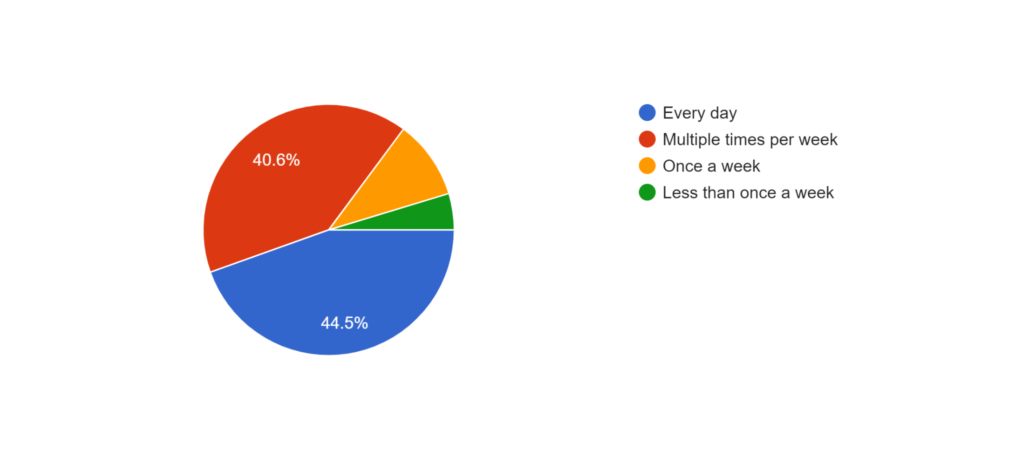
The next thing we asked was what these employees were given by their company to help facilitate remote work.
At Flamingo, we give our employees a yearly remote work stipend, to cover hardware, software and utilities people need to work from home. Many other remote companies do the same.
Of the people we surveyed, they said their company provided the following:
We also wanted to know what kind of employee benefits were most commonly offered to remote workers.
Most (yet a lower than expected number) had paid time off available.
Slightly over half had access to paid health insurance, and a little under a third had their employer offer retirement contributions.
Of those who receive paid time off, we asked how much.
Nearly 30% could take 21 or more days off per year. There were slightly over a quarter of respondents each for 6-10 days off and 11-20.
5.7% of respondents belonged to companies with unlimited PTO.
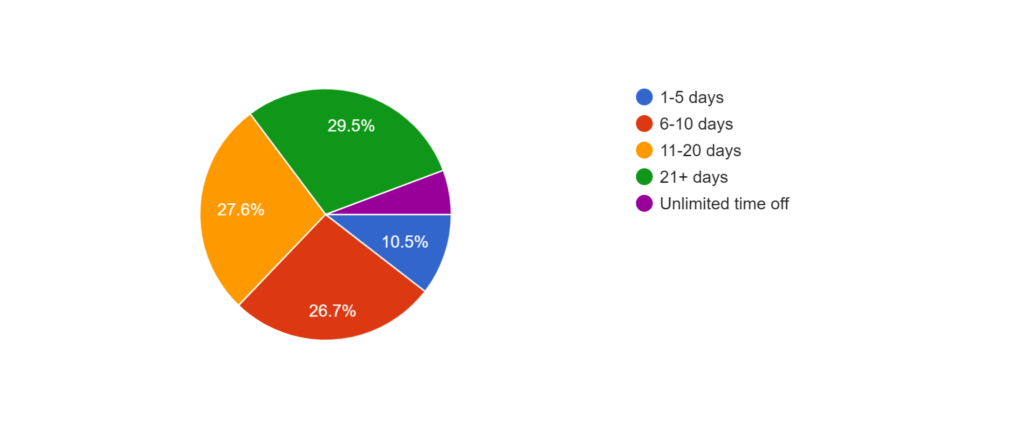
Finally, we asked people their feelings in regards to remote work.
The first question was whether the respondents feel comfortable about the idea of working remotely long-term.
78.6% said yes, compared to 21.4% for no.

Second, we asked if they would recommend remote work to others.
For this, 86.7% said yes, against 13.3% for no.
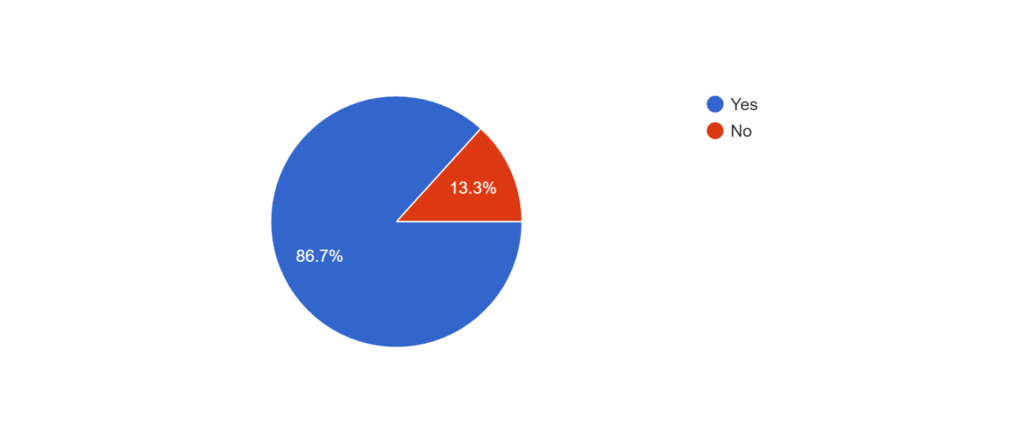
We hope this real-world data helps you better understand the state of remote work in 2024.
The key thing to understand is that remote work appears to be beneficial for most – but there are still challenges we need to work through.
Loneliness, isolation, lack of motivation and communication barriers are real issues that affect remote workers. As is finding the right workflow to be productive away from the office.
At Flamingo, we’re trying to help with this, by streamlining HR workflows for remote teams, as well as empowering employees to take the time off they need to stay refreshed, motivated and happy in their jobs.
You can try Flamingo for free. Join us as we help remote teams build more forward-thinking companies.
Flamingo® makes managing your team’s paid time off a breeze.